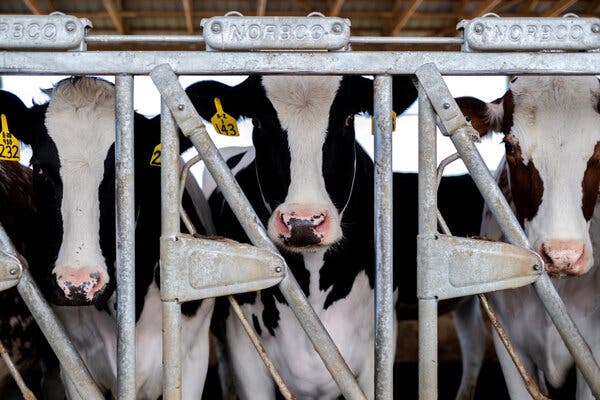Bird Flu
Bird Flu
Testing for H5N1 infection has been limited, and the outbreak was never confined. But asymptomatic cows in North Carolina may require a reassessment.

In the month since federal authorities announced an outbreak of bird flu on dairy farms, they have repeatedly reassured the public that the spate of infections does not impact the nation’s food or milk supply, and poses little risk to the public.
Yet the outbreak among cows may be more serious than originally believed. In an obscure online update this week, the Department of Agriculture said there is now evidence that the virus is spreading among cows, and from cows to poultry.
Officials in North Carolina have detected bird flu infections in a cattle herd with no symptoms, The New York Times has learned — information the U.S.D.A. has not shared publicly. The finding suggests that the infections may be more widespread than thought.
Whether there are asymptomatic animals elsewhere remains unclear, because the U.S.D.A. is not requiring farms to test cattle for infection. It has been reimbursing farmers for testing, but only for 20 cows per farm that were visibly ill. This week, the department said it would begin reimbursing farms for testing cows without symptoms.
Federal officials have shared limited genetic information about the virus with scientists and with officials in other countries, which is important for learning how the virus might be evolving as it spreads.
They are not actively monitoring infections in pigs, which are famously effective hosts for evolving flu viruses, and which are often kept in proximity to cattle. And officials have said they have “no concern” about the safety of milk, despite a lack of hard data.

